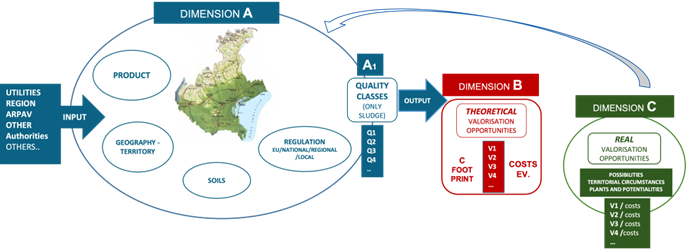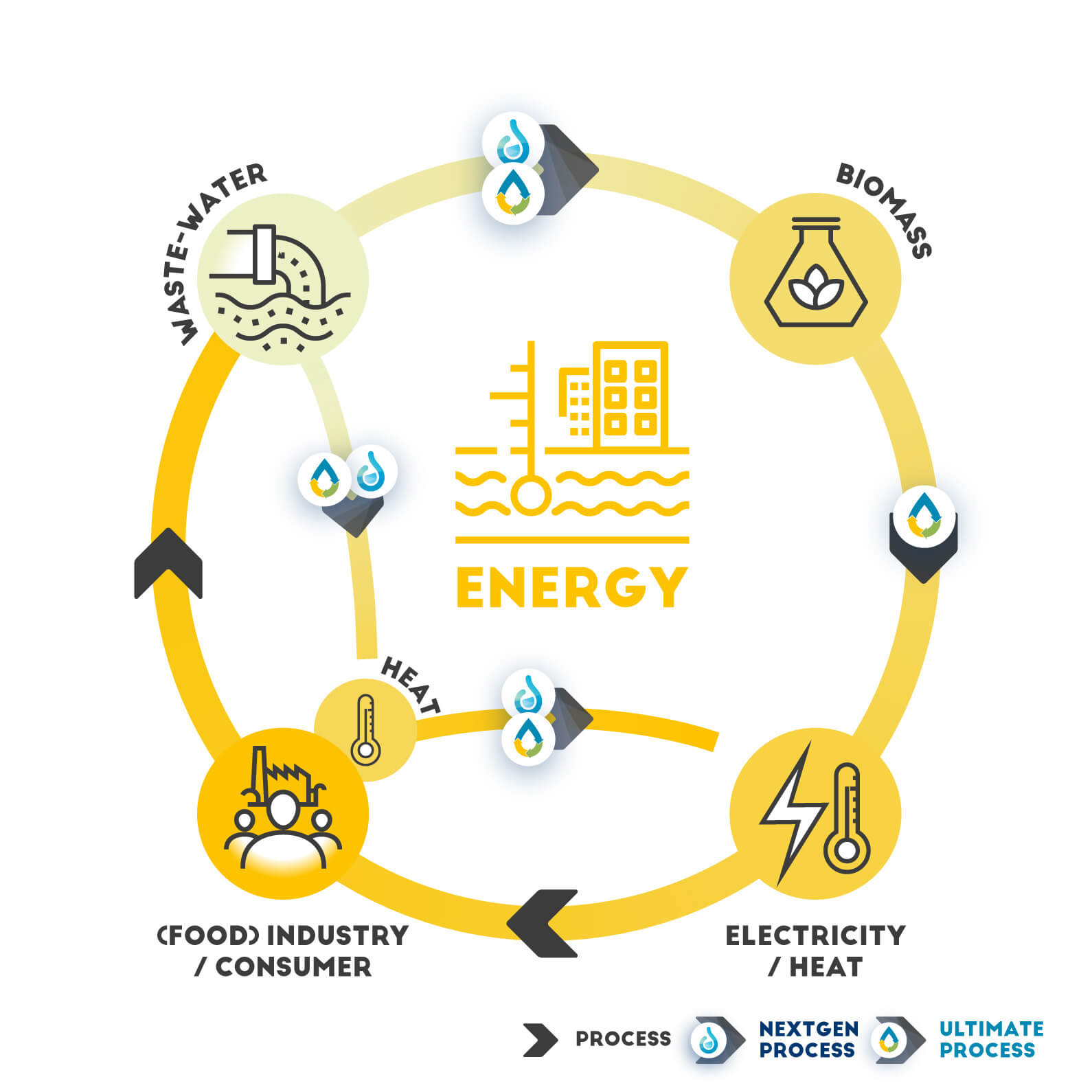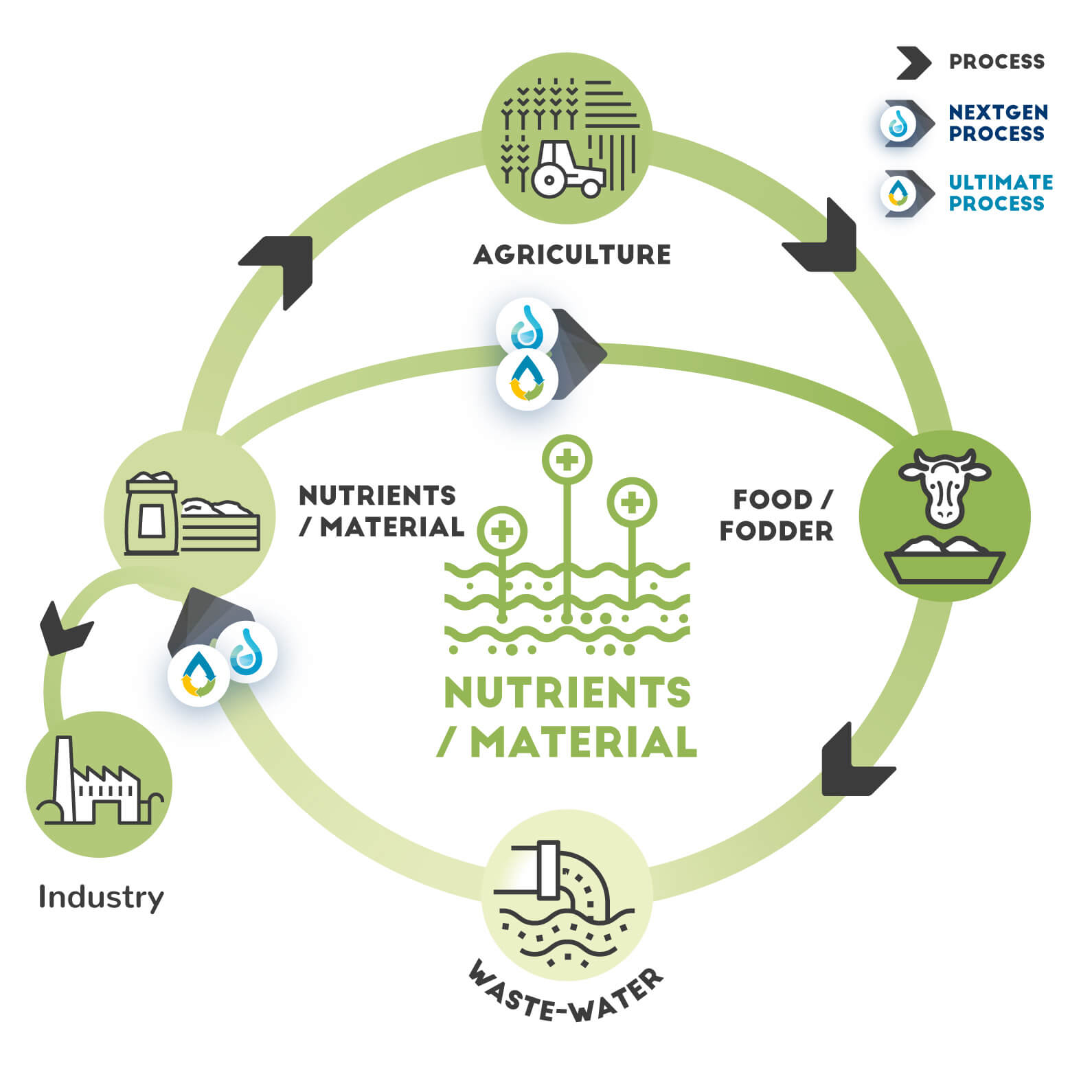
Description
The aim of the sludge management platform is to support the identification of the optimum sewage sludge (from municipal wastewater treatment) valorisation strategy in order to foster resource reuse/recovery either towards agricultural application or energy production. The platform allows evaluation and ranking of treatment options and valorisations, considering information from the geographical, environmental, economic, social and political context.
Three main functional areas are available to the users. Such functionalities can be used individually or in combination:
- Context awareness (dimension A): this area is to be considered a place were collecting and making available to the users the key information related to the territory, including quality and quantity of sludge, producers, treatment plants and destinations; characteristics of the territory related to climate, urbanization, industrial plants, cultivated lands, state of soil, regulations at different levels, with information about barriers and drivers.
- Theoretical valorisation opportunities (dimension B): this area is dedicated to the potential technologies and treatments to be applied to the quality classes identified in the previous area. This area is particularly important for the sludge platform, where the user can assess the quality class of its resource, matching the quality level to the compatible treatments and getting, as a result, a ranked list of valorisation opportunities (that are theoretically applicable) with some insight with respect to general sustainability and costs of the related treatments.
- Real valorisation opportunities (dimension C): using data specific of the territory, the user is able to filter opportunities with respect to what is actually feasible with the available plants, infrastructures and potentiality.
Target audience
Owners of the product
Sign in to access this information.Actors, their roles and interactions
Users of the platform (producers, authorities, end-users/destinations, technology providers) will have access to data visualization interfaces for getting context information (context awareness). Producers will also get access to workflow features that will allow the estimation of theoretical/real valorization opportunities.
Unique selling points
Situational awareness is a key success factors for enabling decision-making processes, but the heterogeneity and dispersion of the relevant data leads to partial knowledge and difficulty in sharing key information among the actors of the water chain in the territorial context. The water reuse strategic platform acts as a diagnostic instrument and one-stop-shop where users can easily access data and information in order to highlight issues and opportunities that otherwise would be difficult to identify.
Technical requirements
The sludge management platform is a web application that can be accessed and used on any web browser. It can be delivered in an “As a Service” mode. In addition, the software will be provided as a docker container in order to make the installation process as easy as possible.
Software data
|
|
| Open Source |
Technologies applied by the product

Energy recovery technologies
In order to mitigate the human made climate change, we urgently need a transition from fossil fuels to renewable energy…

Nutrients/Material recovery technologies
The demand for fertilizers will increase, since 60% of increase in food production until 2050 will be necessary for kee…

